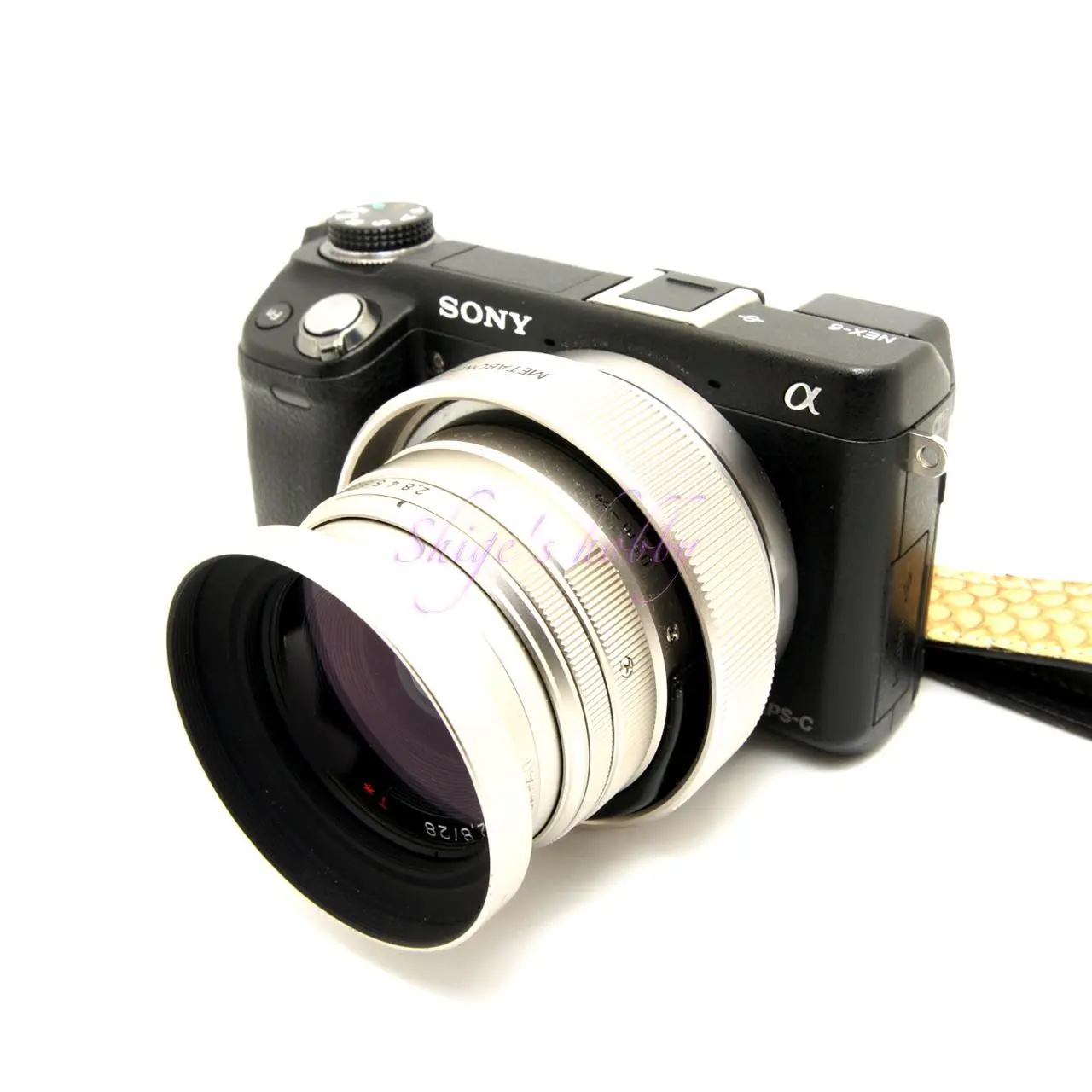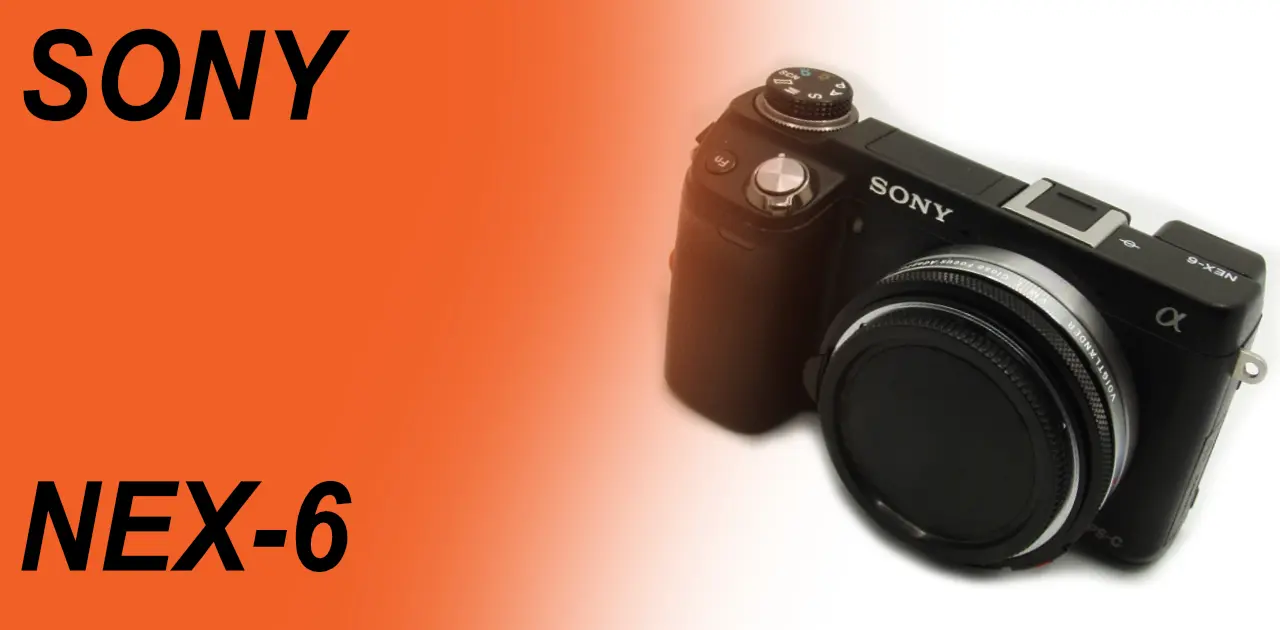Last updated on 2025-09-03
A review and photo examples of the SONY α NEX-6, a 16-megapixel mirrorless digital camera released in November 2012.
- Please see the disclaimer regarding advertising here.
- Italicized links in the text are advertisement links that take you to other sites.
Table of contents
Gallery
The lenses used in the example photos were the CONTAX-G BIOGON 28mm and the Ms-Optics APORIS 135mm.
On the NEX-6, the focal lengths in 5mm format are equivalent to 28mm * 1.5 = 42mm and 135mm * 1.5 = 203mm.
Review


1.Overview
The NEX-6 is a mirrorless camera with an APS-C size sensor that was released in November 2012 at the end of the α NEX brand (the final NEX brand camera was the NEX-5T in September 2013).
It was released after the NEX-7, and the model number is smaller because the pixel count has been reduced from 24 megapixels to 16 megapixels.
The main features are listed below.
- The EVF performance is the same as the NEX-7, with a high resolution of 2.36 million dots.
- The battery continues to use the NP-FW503.
- The memory card is compatible with SDXC4, so there is no problem with availability.
- The accessory shoe uses a multi-interface shoe.
- It does not have in-body image stabilization, so you will have to wait until the α65005 released in 2016.
2.Usage
I bought the NEX-6 as a sub-camera for walking around.
Like the NEX-5, it looks great with a CONTAX-G lens attached via a Metabones mount adapter. The focal length is 1.5 times longer due to the sensor size, but the reliable viewfinder makes it suitable for enjoying manual lenses outside of daytime.
I use a one-sided strap when carrying the camera because the body is light and I don’t use heavy lenses.
If I’m taking snapshots with a light lens attached, the strap doesn’t put too much weight on it, so I don’t have any problems using it. There are no functional issues, but the strap attachment bracket is cheaply made by just drilling holes in a flat plate, and you can see the cost reduction that is appropriate for a low-cost model.
The NEX-6 is a higher-end model of the α NEX, and there are some parts that feel like it has evolved from the previous model, the NEX-7, but it seems like it has forgotten the good points of the NEX-7, which is a shame.
The big problem with the NEX-6 is that, although it has two convenient ring-shaped dials, a control dial and a control wheel, exposure compensation is a two-step specification in which you press the exposure compensation button on the back and then turn either ring. It’s a shame that you couldn’t directly adjust exposure in one step with this ring.
This is where I feel the NEX-6 is most lacking in development.
The LCD monitor can be adjusted up and down from 0 to 90 degrees, but it cannot be rotated 180 degrees for selfies or be as flexible as a vari-angle LCD.
The lens play with the mount adapter allows you to assign focus magnification to a button on the back, so by assigning the magnification function to a button that is easy for the photographer to press, it becomes easier to focus when using manual focus (MF). After trying to assign it to several buttons, I assigned it to the AEL button.
If you release the shutter without magnifying the EVF or the rear monitor, the focus position will be different from the intended focus when viewed on a PC, which is a sad result.
The accuracy of the autofocus (AF) is average and not excellent. It captures subjects with a high contrast reasonably well, but I would like it to focus on close-ups. However, when the subject has a noisy background, the background is often out of focus, so the process of previewing, enlarging, and checking the image is necessary.
The EVF can be difficult to see under sunny days, partly because I wear glasses. The camera I bought second-hand did not have a large EVF eyecup, and I know that it is difficult to see because of the light coming in from the side of the viewfinder, so I will improve this by attaching an eyecup (sold separately).
I also purchased the power zoom EPZ 16-50 at the same time as the camera. This lens is as good as its inexpensive price suggests, but the distortion correction is insufficient, causing distortion in the peripheral areas, and the resolution also deteriorates, so the peripheral image quality is not good.
3.Summary
To sum up the NEX-6, it is a camera that gives a glimpse of the future APS-C size sensor α, with good image handling despite being limited to 16 megapixels and the adoption of the multi-interface shoe that will become mainstream in the future.
The most important thing to consider when using the NEX-6 is how often you will manually adjust the exposure when shooting.
If you don’t do it often, two-step exposure compensation is fine, but for photographers who want to actively control the light, I think it will be intolerable.
Compared to the 24 megapixel sensor of the NEX-7, this 16 megapixel sensor is less likely to produce color cast and is easier to play with the mount adapter. Of course, color cast will never completely disappear, and it will occur depending on the lens and lighting conditions.
As of 2025, used prices will be around the same as the NEX-7, so you will need to compare it with higher-end models such as the α6000 before making your selection. The α6000’s electronic viewfinder has a resolution of 1.44 million dots, which is lower than the 2.34 million dots of the NEX-6 and NEX-7, so you need to actually try it out to see how it looks in the viewfinder and see if you’re satisfied with it.
As an aside, the official name of the NEX series is α NEX. Personally, I hardly noticed that it had the “α” in the name, and when I created NEX-related pages, including this one, I forgot to include the “α” and later corrected it.
But with the announcement of the α7 series in October 2013, the “NEX” part of the α NEX was discontinued, and cameras with APS-C size sensors were replaced by the α6000 series. Personally, I think it would have been fine for them to continue with the NEX brand.
Specifications and series camera comparison
| Model name | NEX-6 | NEX-7 | α6000 |
| Effective Pixel number | 16.1-Mega pixels | 24.2-Mega pixcels | 24.3-Mega pixels |
| Sensor size | APS-C 23.5 x 15.6mm | APS-C 23.5 x 15.6mm | APS-C 23.5 x 15.6mm |
| Back LCD Pixels | 3.0 921,000 dots | 3.0 921,000 dots | 3.0 921,000 dots |
| EVF | Include 2.36 million dots | Include 2.36 million dots | Include 1.44 million dots |
| Shake reducrtion | × | × | × |
| Max shutter speed | 1/4000 | 1/4000 | 1/4000 |
| Battery | NP-FW50 | NP-FW50 | NP-FW50 |
| Touch panel | × | × | × |
| WIFI | ○ | ○ | ○ |
| NFC | × | × | ○ |
| AF | Contrast Image phase difference | Contrast | Contrast Image phase difference |
| accessory shoe | Multi Interface Shoe | Auto-locking accessory shoe | Multi Interface Shoe |
| Recorded media | MS-Pro-Duo SDXC | MS-Pro-Duo SDXC | MS-Pro-Duo SDXC |
| Release date | 2012.11 | 2011.8 | 2014.3 |
| Size | 120 x 67 x 43 | 120 x 67 x 43 | 120 x 67 x 45 |
| Weight (body only) | 287 | 291 | 285 |
| Color | Black | Black | Black,White,Silver,Grafight gray |
Options
- HVL-F20M(flash unit)
- HVL-F28RM(flash unit)
- HVL-F46RM(flash unit)
- LA series mount adapter
- Accessory kit
- Strap
- Case
Reference links
Affiliate Links

Amazon Prime Sale
Update history
- 2025.4.11
- 2024.12.17
- 2024.7.26
- 2023.11.26:First draft



Be First to Comment